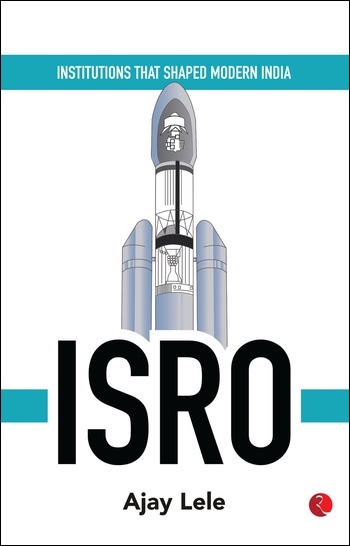Review: Institutions That Shaped Modern India: ISROby Jeff Foust
|
| “ISRO’s success is the result of ingenuity, research and the exceptional capability and willingness of doing more with less,” he writes. |
That may change in a couple years. India, which flew its first astronaut on a Soviet Soyuz mission in 1984, is developing its own human spaceflight program called Gaganyaan. Four Indian Air Force pilots recently completed training in Russia and have returned to India, where the first Gaganyaan capsule is being built for an uncrewed test flight as soon as late this year. While Indian Prime minister Narendra Modi announced in 2018 that the first crewed mission would take place by the 75th anniversary of India’s independence in August 2022, delays caused at least in part by the pandemic have delayed that mission to some time in 2023.
A human spaceflight capability would secure India’s position as a leading space power. Those capabilities have grown over the last two decades, as India’s space program evolved from one largely focused on domestic needs—communications and remote sensing satellites and launch vehicles for them—to a growing commercial presence and capabilities that include missions to the Moon and Mars.
In Institutions That Shaped Modern India: ISRO, Ajey Lele, a regular contributor to The Space Review, offers a brief history of the Indian Space Research Organisation (ISRO), India’s civil space agency. “ISRO’s success is the result of ingenuity, research and the exceptional capability and willingness of doing more with less,” he writes (emphasis in original.)
India’s space program dates back to the 1960s, although ISRO itself was not formally established in 1969. Those early efforts were rooted in pragmatism, seeking to develop capabilities that were practical, like those communications and remote sensing satellites. It also walked a fine line between developing indigenous capabilities while partnering with other nations, including both the Soviet Union and the United States. In the 1970s, it licensed technology for the Viking engine developed by France for the Ariane family of vehicles; the rechristened Vikas engine is used today on its PSLV and GSLV vehicles.
| “We do not have the fantasy of competing with economically advanced nations in the exploration of the moon or manned space flight,” Sarabhai wrote in the 1960s. |
Lele credits the early leaders of India’s space program for creating the structure that enabled ISRO’s successes in later years. That includes Vikram Sarabhai, widely regarded as the father of India’s space program, but also one of his successors as chairman of ISRO, Satish Dhawan. During his 12-year tenure as head of ISRO from 1972 to 1984, Dhawan “single-handedly shaped the trajectory of India’s space programme in general and of ISRO in particular,” Lele writes. He did so through new organizational structures for the agency, establishing a series of centers and a “dynamic management structure” where project directors had greater authority. “His basic idea was to ensure that independent efforts of the entire ISRO community were coordinated and channelized to realize a common goal—be it building a satellite or a launch vehicle,” Lele writes.
Those early leaders like Sarabhai and Dhawan tend to overshadow their successors: the chairmen who followed Dhawan since the mid-1980s are mentioned only in passing in the book, which is structured more around specific programs like launch vehicles and satellites. Those efforts are covered in subsequent chapters, along with new initiatives like science missions and human spaceflight.
Those new efforts reflect a maturation of India’s space program that stand in contrast to its original aims. “We do not have the fantasy of competing with economically advanced nations in the exploration of the moon or manned space flight,” Sarabhai wrote in the 1960s. Today, India has spacecraft orbiting the Moon and Mars and has attempted one landing (unsuccessfully) on the Moon with a second spacecraft in development. Gaganyaan, meanwhile, promises to send people into space in a couple years. But, as Lele outlines in this short book, the fantasies of the 1960s are becoming the realities in the 2020s because of the foundation created in the early years of the Space Age.
Note: we are using a new commenting system, which may require you to create a new account.
